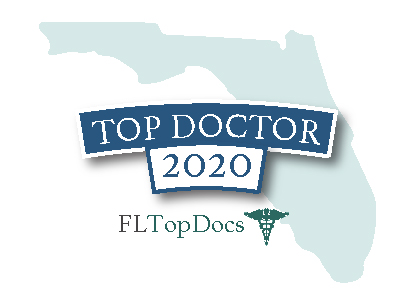If it involves a laser it must be better than a procedure without the laser, right? This is a common misconception which arises from our natural fascination with new technology. There is also an inherent desire in people ( or is it only Americans ) to be the first to experience the newest wrinkle, no pun intended, in plastic surgery. To understand laser resurfacing, one must know a little bit about lasers.
Laser. The word is an acronym and stands for Light Amplification by Stimulated Emission of Radiation . Laser light has several unique properties. It is monochromatic, that is, it contains only one color or wavelength of light. It is coherent, meaning that the light beam does not disperse with increasing distance from the source; the beam is focused, even at great distances. It is very powerful. The heat generated by some lasers is likened to that on the surface of the sun.
Lasers work by transmitting their energy to the material that they strike. If the material absorbs the laser light well, the laser light energy will transfer to the material which will heat up. The carbon dioxide (CO2) laser produces an invisible light which has a wavelength that is absorbed by water. When this light strikes a living cell, the laser energy is transferred to the water in the cell. If sufficient energy is transferred, the water in the cell will boil or vaporize, destroying the cell. In the past, CO2 lasers had limited usefulness in that a lot of their heat was transferred to areas around the target spot, producing too much collateral damage to tissues. The solution to this was pulsing. Pulsed lasers transmit an incredibly brief, incredibly powerful burst of laser light. On striking the skin, the first layer of cells is vaporized but before anymore underlying tissue can be damaged, the light has shut off. This allows the CO2 laser to resurface the skin, layer by layer, without producing a more extensive zone of injury, or burn. Although no longer a new technology, the pulsed CO2 laser is still the workhorse for skin resurfacing of the face and the results are the “gold standard” for this procedure. It does have the longest “down” time, leaves the skin quite pink for months, and is the most “invasive of the laser techniques.
The erbium laser heats water even more efficiently than CO2 and is very useful for resurfacing too. Both CO2 and erbium lasers have their place in the practice of plastic surgery for resurfacing needs. Contrary to claims of less postoperative redness with the erbium laser, both produce redness of the skin which is more dependent on the depth of the resurfacing than on the type of laser used.
A new technology is “fractionated” lasering. If you think of the standard laser as producing a single beam of light, fractionated lasers produce a pattern of many tiny beams. The area on the skin “hit” by the laser is smaller with intervals of undamaged skin between these. Think of multiple dots versus one big spot. This speeds healing considerably and fractionated laser procedures heal in half the time for the CO2 or older erbium lasers. The down side to this is that the results are correspondingly less impressive too. These work fine for skin with mild to moderate wrinkling but for severely wrinkled skin they may be inadequate.
Although most laser resurfacing removes some surface skin, requiring a period of healing with associated seepage and crusting of the skin, there is a non-ablative form of laser resurfacing. This uses a combination of fractionated technology with an erbium laser to penetrate the skin, without damaging it, yet producing an effect by stimulating collagen, the skin’s structural protein, to increase. The Palomar non-ablative laser handpiece is the only device at this time which is approved by the FDA for reducing the appearance of stretch marks. It is also used on acne scars and fresh surgical scars to help the fade and smooth out. I believe that this technology is in its infancy and the results tend to somewhat “hit and miss”. Some patients seem to respond great and others not at all.
Laser resurfacing is done to eliminate wrinkles, reverse some of the sun damage and aging changes in the skin, and produce a slight tightening of the skin. It is very effective. In some patients, a period of skin preparation may be beneficial to optimize the results. After 4 to 6 weeks of preparation, the resurfacing is done.
Laser resurfacing requires some anesthesia. In some procedures, we can sometimes use a topical cream applied to the skin to numb it. Local anesthesia can be used, along with intravenous sedation when necessary. Large areas, such as a full face resurfacing are often done with patients asleep under general anesthesia.
Post resurfacing discomfort, healing time, redness, and relative risks are a function of the depth of the resurfacing procedure. The deeper the resurfacing, the more effective it will be, but along with this will be greater discomfort, healing time, redness, and potential risks.
Just as pre resurfacing preparation of the skin is crucial, so is post resurfacing care. Patients need to be closely followed to be sure that everything is done to ensure optimal healing and the best possible results. Skin resurfacing of this type produces permanent results, unlike lighter salon type procedures. The skin will always look smoother and more youthful than it would have without the resurfacing.
Like all surgical procedures, laser procedures carry risks. Patients must be protected from inadvertent burns. The eyes need to be carefully shielded. Any burn, even a controlled laser burn, can produce scarring if the lasering is too aggressive. Lasers are notorious for activating the virus that cause cold sores on the lips and we pre-treat all patients to prevent this. Skin color changes can occur, both darkening and lightening, depending on the skin type and type of laser procedure. Darkening usually resolves in a few months. Lightening is usually permanent. Ultimately, one cannot guarantee the results of laser resurfacing as there are wide individual variations among patients in how they respond.





